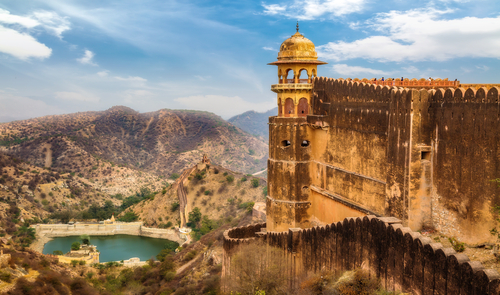VISITING PLACES
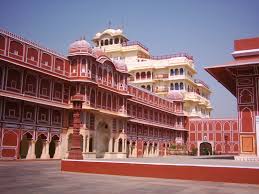
City Palace : Built in the 18th century by Maharaja Sawai Jai Singh II, the City Palace in Jaipur is a magnificent blend of Rajput, Mughal, and European architectural styles. Serving as the seat of the Maharaja, it comprises beautiful courtyards, gardens, and structures like Chandra Mahal and Mubarak Mahal. The palace stands as a testament to Jaipur's royal legacy, showcasing opulent interiors, intricate frescoes, and a rich collection of artifacts. Today, part of the palace is a museum, providing a glimpse into Rajasthan's regal past. The City Palace remains an iconic symbol of Jaipur's architectural and historical grandeur.
Amber Fort : Amber Fort is located just 11 kilometres from the city centre. It is an architectural marvel built in the 16th century. The fort is made of sandstone and marble with intricate carvings. It reflects the grandeur of Rajputana architecture. The Sheesh Mahal (Mirror Palace), Diwan-i-Aam (Hall of Public Audience), and Diwan-i-Khas (Hall of Private Audience) are some of the main attractions. Today this regal citadel proudly holds the title of UNESCO World Heritage Site. A ride up the cobbled path on an elephant to the main entrance is also allowed. Visiting Amber Fort has to be on your list of best things to do in Jaipur.
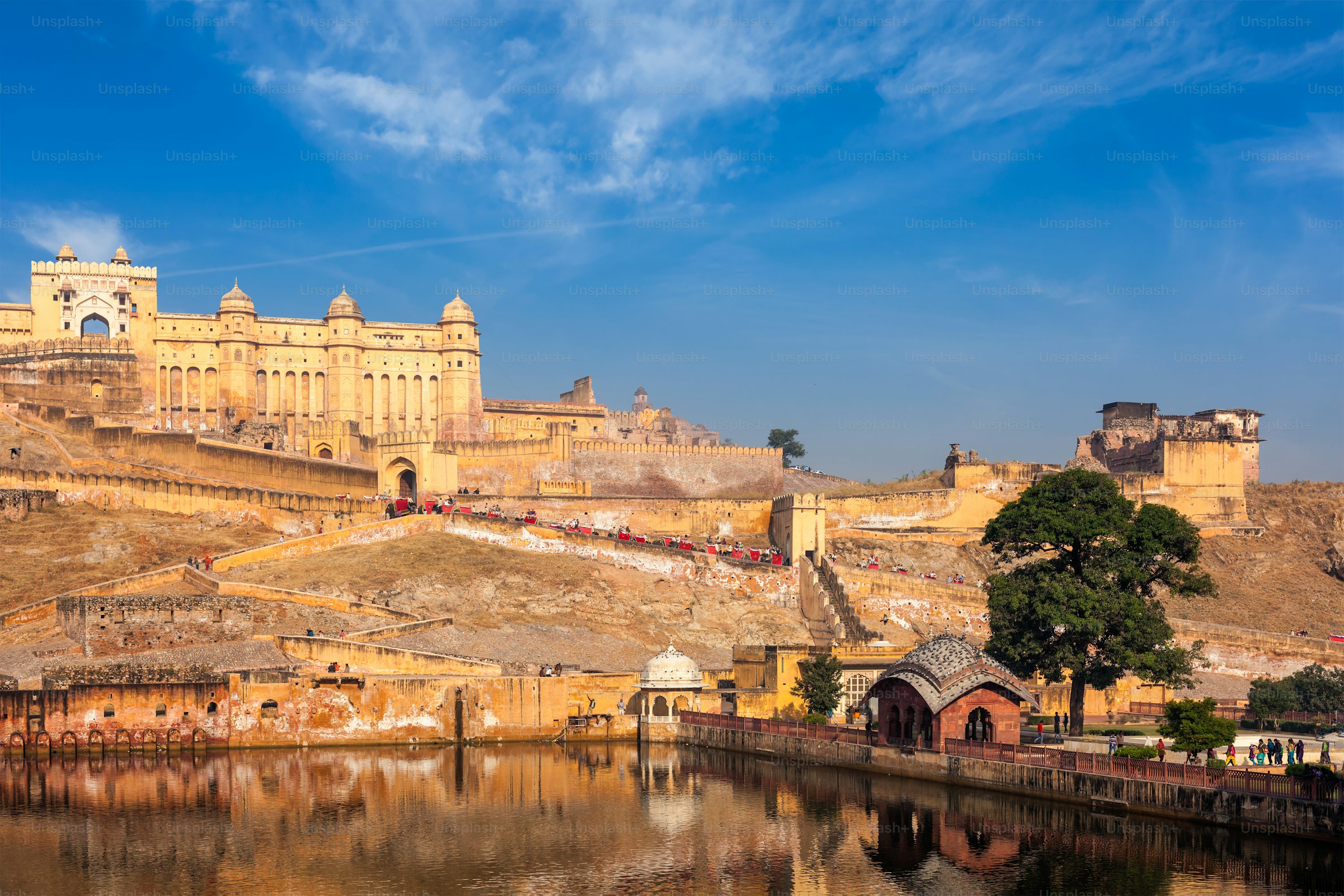
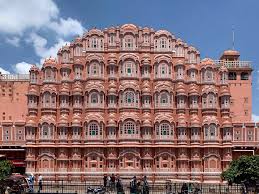
Hawa Mahal : Hawa Mahal, built in the shape of a honeycomb, is a landmark of Jaipur. Also known as the ‘Palace of winds’, this five-story building was built in 1799 by Maharaja Sawai Pratap Singh for the royal ladies to see everyday life and celebrations on the street, as they were not allowed to make a public appearance without covering their faces. This palace has 953 windows or charkhas, which are adorned with intricate designs. A museum within the Hawa Mahal complex houses famous items like miniature paintings and ceremonial armour.
Jal Mahal : Jal Mahal (Water Palace) in Jaipur gives the illusion of floating on the lake’s surface. An architectural marvel, it is a testimony of the engineering prowess of the Rajputs. It is a five-story palace where four floors remain under water. Jal Mahal blends Rajasthani and Mughal architecture. Go boating in the Man Singh Lake for a stunning view of this palace.
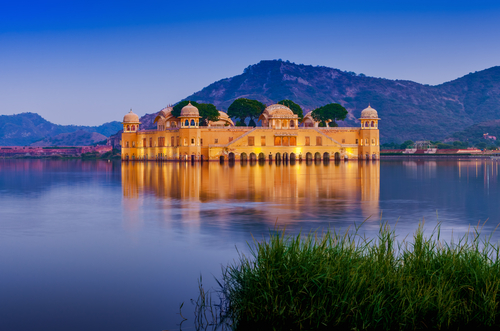
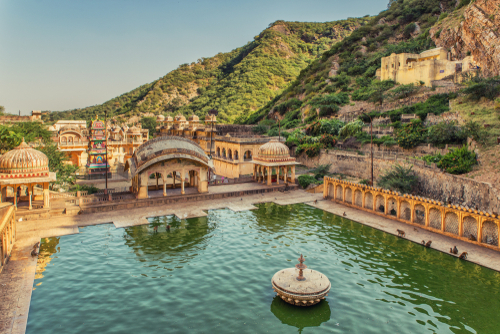
Galtaji Temple : Galtaji Temple is a Hindu pilgrimage site in Jaipur. The vast temple complex consists of shrines, holy ponds, pavilions and natural springs. The walls are designed with carvings and paintings and resemble a grand haveli. The temple complex is made of several temples, Galtaji being the main temple. The temples are built within a narrow mountain pass in the Aravalli hills and the walls and ceilings are adorned with frescoes and paintings from Indian mythology. The intricate design of the canopies/chhatri and lattices add to its beauty. A large number of monkeys on the premise give it the name ‘The Monkey Temple’. Locally known as the ‘Galwar Bagh’ Galtaji temple, it is also referred to as the Temple of the Sun God and houses three temples dedicated to the Sun God, Hanuman and Balaji.
Birla Temple : Birla Temple, also known as the Lakshmi Narayanan Temple, designed in white marble, has a magnificent shrine and beautifully sculpted idols of Lord Vishnu, Goddess Lakshmi and other Hindu Gods and Goddesses. Delicate carvings of Hindu symbols and ancient quotes from the Geeta and the Upanishads adorn the walls of this fascinating temple situated on an elevated ground at the base of Moti Dungri hill.
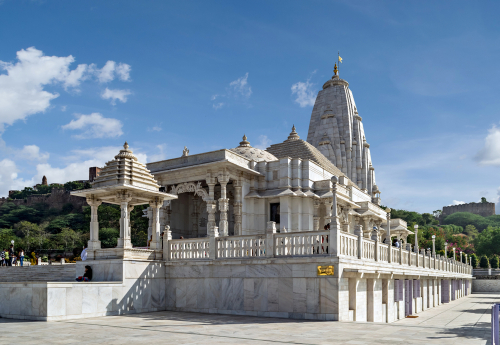
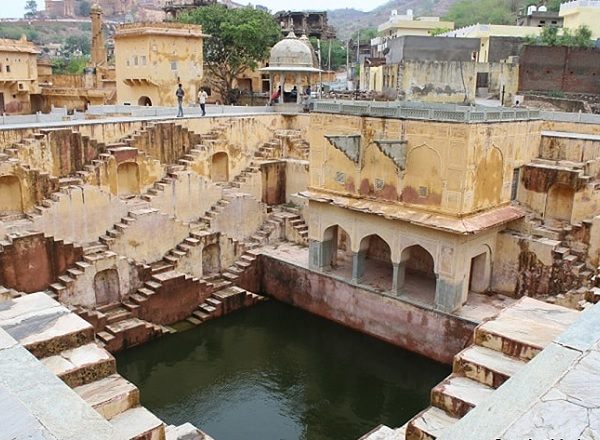
Panna Meena Ka Kund : Panna Meena ka Kund, also called Panna Meena ki Baoli, stands as an ancient stepwell with a rich history. In its time, it served as a vital water source and a communal gathering space. Dating back to the 16th century, this stepwell features distinctive recessed doorways, octagonal pavilions and a mesmerising interplay of criss-cross stair patterns throughout its structure. The symmetrical design of the eight-level stepwell is so impeccably executed that it offers an exceptional opportunity for captivating photographs.
Jaigarh Fort : The Jaigarh Fort is the most spectacular fort to overlook Jaipur. It is famous for the Jaivana cannon, considered the largest cannon in the world. The Jaigarh Fort was built in 1726 by Sawai Jai Singh II, to protect the Amer Fort. Named after its builder, it is also known as the fort of victory because it has never been conquered. Jaigarh stands amidst thorn-shrub-covered hills with steep roads going up to the main gate, Dungar Darwaja. The fort is located on Cheel ka Teela (The Eagle’s Hill) on the Aravalli mountain range, overlooking the Maotha Lake and Amer Fort. The Diwa Burj, a structure from the medieval period and a watchtower called ‘Cheel ka Teela’ are popular tourist attractions that give you an enchanting view of the entire city.
